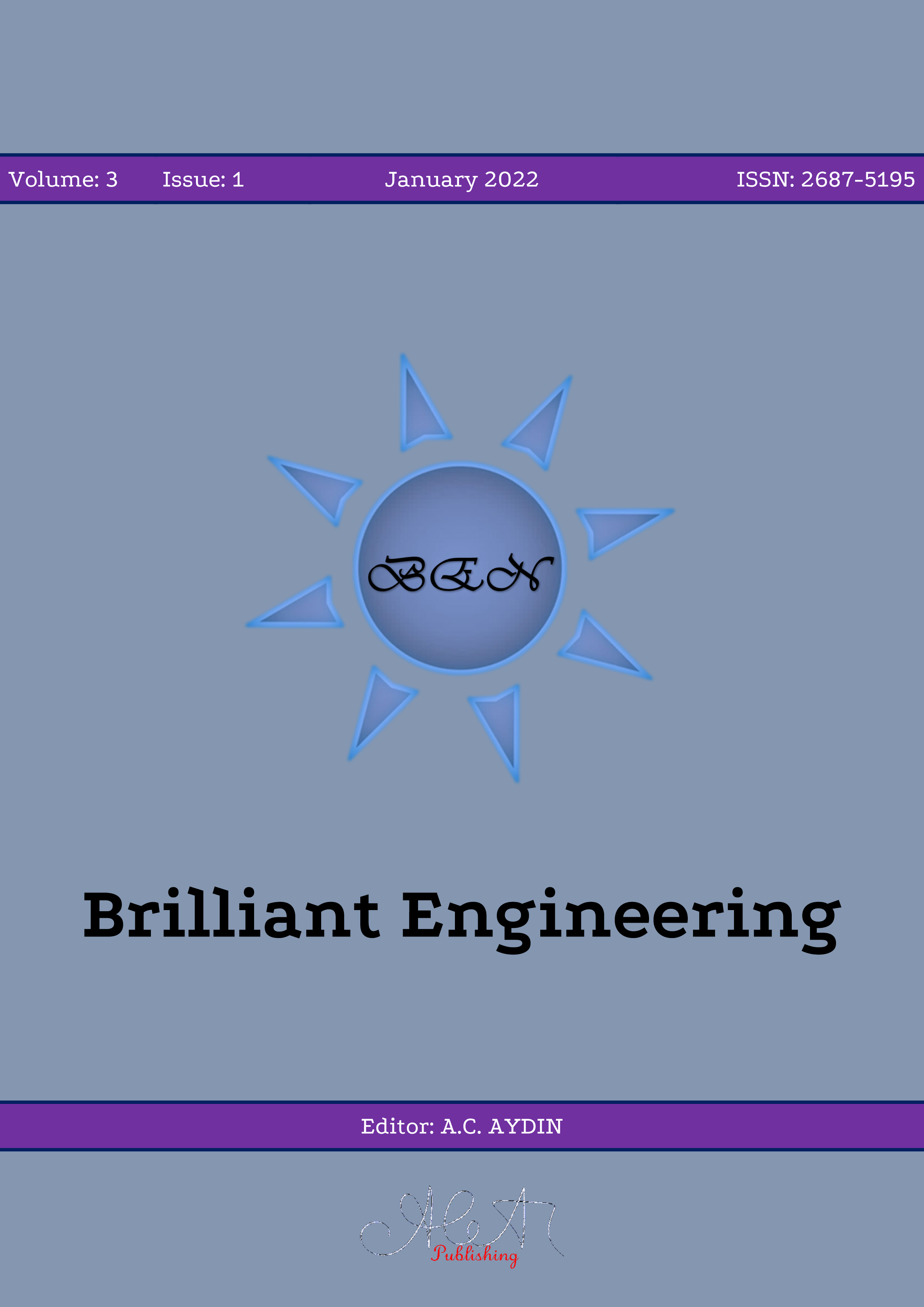ISSN:2687-5195
Journal of Brilliant Engineering (BEN)
ARTICLES Volume 4 - Issue 3 - July 2023
Onur SÖZÜDOĞRU
In this study, the effect of biosorbent dosage (0.1-0.4 g/L), dye pH (3.0-9.0) and initial dye concentration (50-500 mg/L) on synthetic Auramine O (AU-O) dye removal of biosorbent produced from Pyracantha coccinea (PC) plant by physical modification was investigated and the dye removal behavior of the biosorbent was investigated by kinetic and isotherm experiments. In the batch experiments, it was observed that as the adsorbent quantity was raised from 1 g/L to 4 g/L at a consistent dye concentration, the adsorption capacity declined from 69.25 mg/g to 22.73 mg/g. The adsorption capacities of AU-O dye at concentrations of 50 mg/L and 100 mg/L were determined to be 22.350 mg/g and 72.35 mg/g at 200 mg/L, respectively. The reason why there was no significant increase in adsorption capacity at higher dye concentrations (250-500 mg/L) was that at constant amount of biosorbent, the change in adsorption capacity was minimal since the active sites of the biosorbent reached saturation. The adsorption capacity was determined to be 26.512 mg/g, 38.74 mg/g, and 44.07 mg/g at pH:3.0, pH:4.88, and pH:7.0, respectively. It has been determined that the adsorption capacity achieved at pH 9.0 (44.21 mg/g) was nearly equivalent to the adsorption capacity observed under neutral pH conditions. The adsorption mechanism is best explained by the Langmuir isotherm (qm:123.10 mg/g and R2:0.990) and the pseudo-second-order kinetic models (R2: 0.985) in the adsorption isotherm and kinetic research.
https://doi.org/10.36937/ben.2023.4871
Raja Yasir Mehmood Khan
Rahim Ullah
Dr. Muhammad Faisal
In this comprehencive review, our focus centers novel strategies and methodologies in FBG temperature sensors and thier interrogation techniques invistigated for sensing in different environments. FBG temperature sensors are invistigated for cryogenic, ambient, high-temperature and ultrahigh-temperature environments. Interrogation techniques encompasses optical interferometry, optical edge filtering, time division multiplexing, optical spectrum analysis (OSA) and wavelength division multiplexing (WDM), each possessing distinct characteristics and working principles. The optical interferometry technique offers exceptional sensitivity and high resolution but has a relatively lower temperature sensing range. The optical edge filtering technique provides good temperature sensitivity, enhanced resolution and nominal temperature sensing range which are mainly dependent on the span and slope of the edge of the optical filter. TDM interrogation technique has the multiplexing capability and cost-effectiveness but limitations like the requirement of partial reflective matched FBGs, spatial separ¬¬¬¬ation of the FBGs and the potential cross-talk make it less attractive for commercial applications. OSA and WDM techniques excel in multiplexing capabilities and boast the widest temperature sensing range. However, OSA is limited for research applications only. On the other hand, WDM stands out with its cost-effective per-sensor implementation and extensive usage in commercial interrogation systems. The significance of this review lies in its ability to provide researchers, engineers, and practitioners with a coherent understanding of the evolving FBG temperature sensing landscape. By consolidating and highlighting recent breakthroughs, we aim to inspire further research initiatives and foster the development of optimized FBG temperature sensing systems.
https://doi.org/10.36937/ben.2023.4840
Atifet Bingöl
Recep Boncukcuoğlu
When pollutants in air are high in concentration and in duration air pollution occurs so as to give harm to human beings, animals and plants. The main reason of air pollution is human activities, especially motor vehicles are accepted as the main source of air pollution. The comfort that the technology provides the people makes the motor vehicles an indispensable part of our life, so the number of motor vehicles is increasing day by day. With the increase of vehicles in number, vehicle queues occur on the ways, especially on the signalized junctions.
Because of the geographical position of Erzurum, the winters are cold and last long. Also because of the high altitude, in winters the average heat is low and besides that the percentage of O2 falls to 16,5. This causes incomplete combustion both in the stationary combustion processes and in the motor engines. As a result of this the amount of the pollutants like HC and CO is increasing.
In this study, the effects of the geographical position and the meteorological peculiarities of Erzurum on the pollutants emitted by motor vehicles are examined. For this the exhaust gaseous emission measurements of 30370 motor vehicles made in various months are inspected statistically. The main result of these statistical analyses is that the pollutants like CO and HC are raising the maximum concentration in the older model vehicles. The main reason of this is the converter usage in the newer model vehicles.
https://doi.org/10.36937/ben.2023.4877

